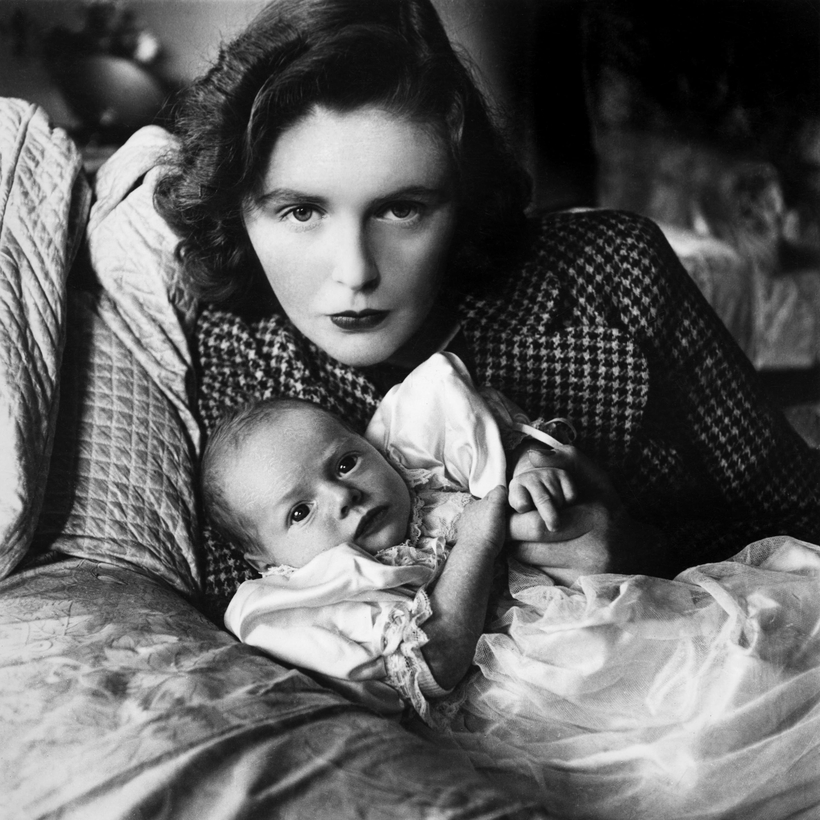From Mata Hari to Lola Montez, courtesans—or grandes horizontales—have always been fascinating to read about. One wonders what makes them so irresistible? A strategic fluttering of eyelashes? A luminescent smile? Or perhaps “a voice ever soft / Gentle and low—an excellent thing in a woman,” as Shakespeare observed.
What they all specialized in were prodigious powers of self invention, which brings us to Pamela Harriman, who may have been the greatest shape-shifting courtesan of the 20th century, and has not been given her due, according to Sonia Purnell’s Kingmaker. There have been two earlier biographies of Harriman, neither of them bent on re-envisioning her as a geopolitical player, as Purnell is, but content instead to present her as, well, just that, a courtesan.
Harriman was born in 1920 into a cash-poor aristocratic family; her father was the 11th Baron Digby. They lived in Minterne House, a home with 50 rooms but no bathroom, in southwest England. After Harriman attended finishing school, in Paris, the next step was to get her married, but she failed dismally as a debutante. A bit chubby, she did not have the requisite wardrobe, and she was “regarded as a joke” by Nancy Mitford. But Harriman became friendly with Kathleen “Kick” Kennedy, whose father, Joe, had been made ambassador to the U.K. (and who, it was rumored, had tried to force himself on Harriman one night). Now a member of London’s louche set, she had a brief affair with the seventh Earl of Warwick, one of England’s richest men, who would claim that “he had bedded Pamela the first night and kicked her out on the second.”
In 1939, Harriman was introduced to Randolph Churchill, Winston’s handsome but volatile 28-year-old son. Over coffee after their first dinner together, he proposed rather unromantically, explaining that his father expected him to produce an heir before he left to join the fight against the Nazis. Over the opposition of friends, her own parents, and even Randolph’s mother, Clementine, who considered the marriage “rash and unconsidered,” Harriman decided to go ahead. She got on instantly with Randolph’s father, who confided that “he had a thing for redheads.”

The couple’s wedding night consisted of Randolph reading to his new wife from Hilaire Belloc, and Gibbon’s six-volume The History of the Decline and Fall of the Roman Empire, “between bouts of snoring or farting.” Whatever the drawbacks of the union, Harriman was introduced to the world of politics. While Randolph carried on affairs with Clare Boothe Luce, among others, Harriman turned to her in-laws at Admiralty House, where she laughed flirtatiously at Winston’s jokes, cut his cigars, and played rounds of bezique with him. Even the distant Clementine was charmed by her.
When Harriman became pregnant, Winston was thrilled and began using the glamorous 20-year-old as his envoy. She became a trusted confidante, attending dinners with his senior ministers, and was at the House of Commons for his first appearance as prime minister, when he declared that appeasement of Hitler was over. During the Blitz, she shared a bedroom with her father-in-law in a temporary shelter created in the wine cellar under 10 Downing Street, taking the lower bunk bed. Harriman regularly volunteered to help out with the damage done by German bombings, organizing meals for evacuated children. Her star kept ascending, due to what Purnell describes as “a rare cocktail of flattering attention, smoldering sex appeal and an impressive grasp of geopolitics.”
While Randolph was off sleeping with prostitutes and drunkenly spilling state secrets at his club, Harriman was pursuing her own affairs, with Averell Harriman; Jock Whitney, a high-ranking intelligence officer; and Britain’s chief of the Air Staff Charles “Peter” Portal. Signally lacking in the maternal instinct, the 23-year-old left her son, Winston, with nannies or her in-laws while she hosted dinners in her top-floor apartment, at 49 Grosvenor Square. At one of these she met the American newsman Edward R. Murrow, with whom she had perhaps the most intense affair of her life and whom she wanted to marry. Having once been seen by her peers as “fat, frumpy and stupid,” Harriman was now a power broker, helping to cement the ties between America and Britain.
Her star kept ascending, due to what Purnell describes as “a rare cocktail of glittering attention, smoldering sex appeal and an impressive grasp of geopolitics.”
After divorcing Randolph, in 1945, Harriman went in search of “a rich new man.” At his summer ball in the Bois de Boulogne, she met Prince Aly Kahn, a notorious seducer, who introduced Harriman to sexual techniques involving ice cubes in her mouth and flexing her own intimate muscles. Her next conquest was the dashing Fiat chairman Gianni Agnelli, with whom she frequented the palatial villas and yachts of Aristotle Onassis and Charles Wrightsman. She helped Agnelli secure a loan through the Marshall Plan for his company’s reconstruction. They eventually parted—his family opposed his marrying her despite her converting to Catholicism—but he continued to seek Harriman’s counsel on political issues and phoned her at seven a.m. every morning for the rest of her life.
Harriman moved on to the married Élie de Rothschild, and, having dieted her way down to a size 4, began frequenting the couture houses. She moved to America after marrying the Hollywood agent Leland Hayward, having lured him away from his wife, Slim Keith, and permanently enraging Hayward’s daughter Brooke, who would eventually write acrimoniously about her new stepmother in her best-selling memoir, Haywire. Harriman also became friendly with John and Jackie Kennedy, as well as with Truman Capote and his “Swans.” (The character of Lady Ina Coolbirth in Capote’s explosive Esquire short story “La Cote Basque, 1965” was supposedly based on Harriman.)

After Leland’s death, the “widow of opportunity,” as some called her, got involved with Frank Sinatra, but it was in the 1970s, when Averell Harriman became a widower, that she finally married her old flame and stepped back into the political limelight, becoming part of a glamour couple. Harriman had good instincts, backing Jimmy Carter and Bill Clinton, when people still saw him as an upstart huckster. (She met Donald Trump once, only to find him “phoney and tacky.”)
Harriman gave lavish dinner parties, donated her husband’s money generously, and worked tirelessly together with Averell on détente, meeting with the Gorbachevs and twice visiting the Soviet Union. But there would always be people, especially women, who viewed her with distaste. “Nobody could stand her,” Sally Quinn is quoted as saying.
In March 1993, Clinton appointed Harriman ambassador to France. Then an energetic 73, she worked as effectively in front of the scenes as she had done behind them. President Mitterrand became attached to her, as did a young Nicolas Sarkozy. She continued to entertain grandly and was seen as someone with political savvy “and an ability to size up other people.” Still, there were shadows: her relationship with her son was largely transactional, and her stepchildren despised her and sued her relentlessly.

In 1997, after lunch with David de Rothschild, she went for her daily swim at the Ritz, where she suffered a stroke and died. Agnelli got on the first plane to Paris, and President Chirac gave her a posthumous Grand Croix de la Légion d’Honneur, making her the first foreign female diplomat to receive one. Twelve hundred people from 40 countries attended Harriman’s memorial service, at the National Cathedral, where Chirac and Clinton spoke. (The ever bitchy Quinn noted: “The running joke was that there wasn’t a wet eye in the house.”)
Kingmaker is a feminist reclamation project, filled mostly with admiration rather than judgment. Purnell succeeds in conveying Harriman’s genuine political skills and her interest in using the insider knowledge she gathered, whether whispered in bed or brandished at one of her dinner parties. There is something arguably ruthless in her nature that Purnell doesn’t entirely deal with, but she has brought her subject out from between the sheets and enabled her to stand in her elegant clothes, coiffed hair, and jewels in the naked light of day.
Daphne Merkin is a Writer at Large at AIR MAIL and the author of numerous books, including the memoir This Close to Happy: A Reckoning with Depression and the novels Enchantment and 22 Minutes of Unconditional Love. She is currently working on a book about her experiences in psychoanalysis


